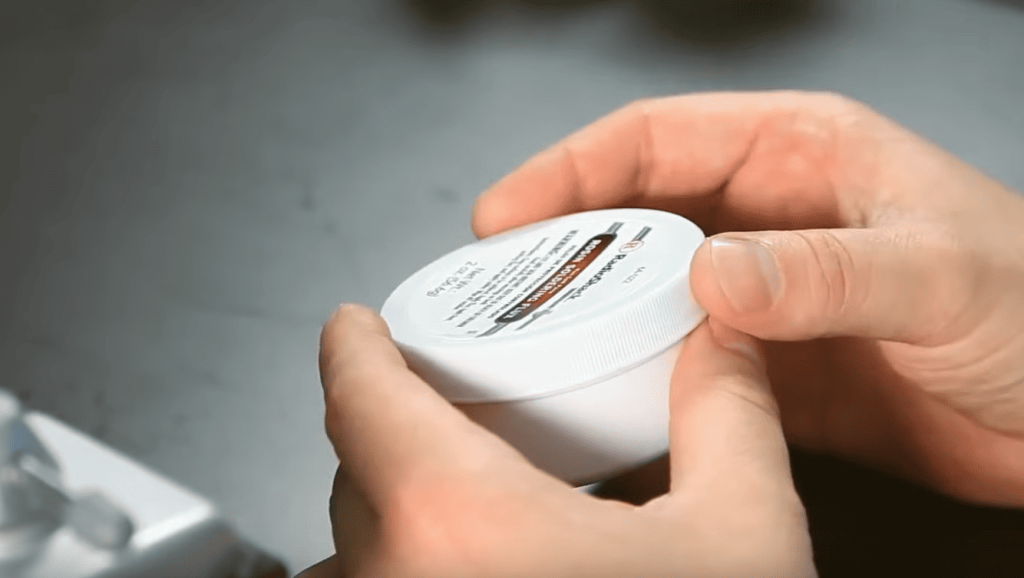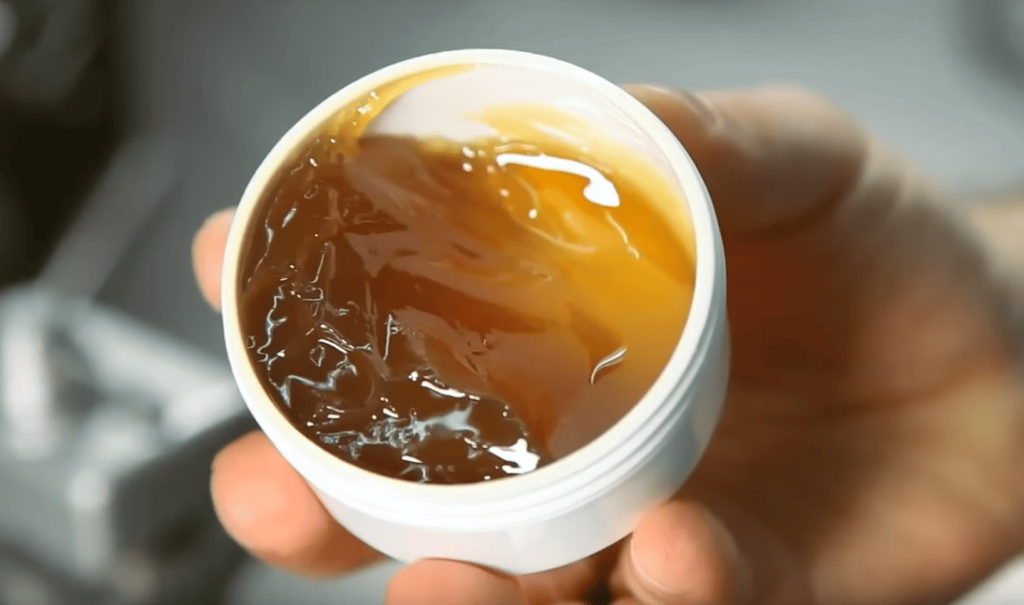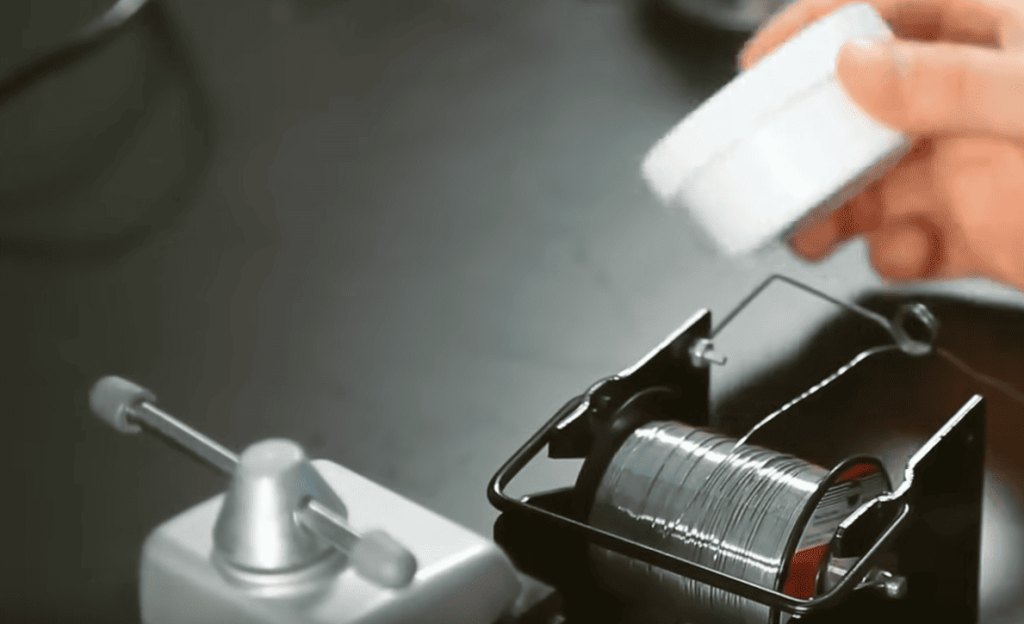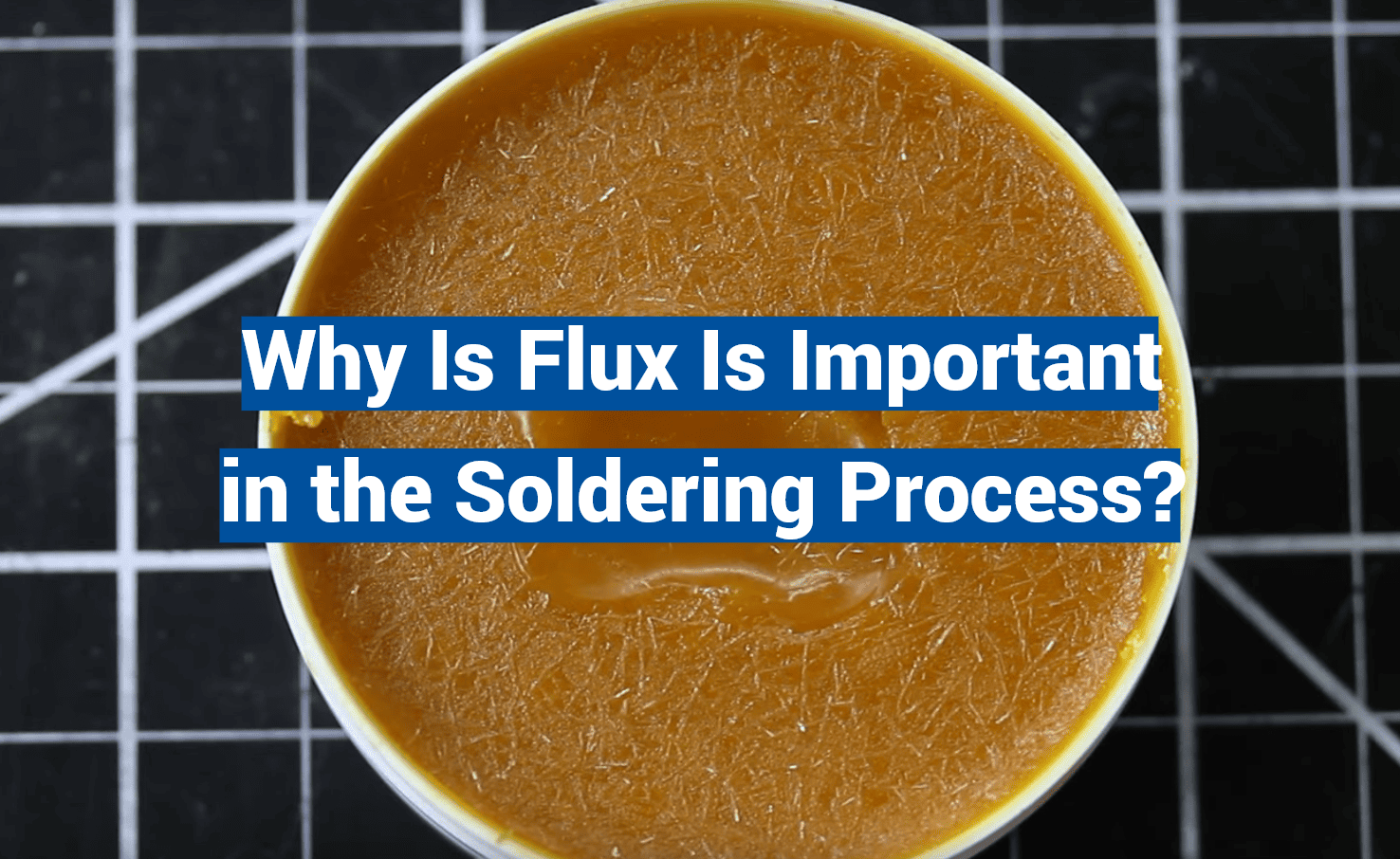Did you know nearly 90% of soldering failures in electronics manufacturing stem from improper flux application? This chemical agent quietly determines whether your smartphone survives a drop or a spacecraft endures cosmic radiation. Without it, even the most precise solder joints risk cracking, corroding, or failing when you need them most.
Flux acts like a microscopic cleaning crew during metal joining. It scrubs away oxidation layers that form on copper and other surfaces – contaminants thicker than a human hair relative to their size. This preparation allows molten solder to create true metallurgical bonds rather than superficial connections prone to dewetting.
Professionals rely on this compound for more than just initial adhesion. Properly applied flux ensures electrical currents flow smoothly through components while preventing “cold joints” that plague DIY projects. From circuit boards to automotive sensors, durable connections depend on this often-overlooked step in the assembly process.
Key Takeaways
- Flux removes oxidation layers 100x thinner than paper to enable proper metal bonding
- Creates metallurgical bonds stronger than basic surface adhesion
- Prevents common failures like cracked joints and intermittent connections
- Essential for mass-produced electronics and precision aerospace systems
- Directly impacts electrical conductivity and long-term durability
Understanding Flux: Definition and Key Functions
Behind every strong solder joint lies a hidden hero: flux. This chemical agent works backstage to ensure metals bond properly during electronic assembly. Available as paste, liquid, or embedded in solder wire, it tackles invisible barriers that ruin connections.

What is Flux?
Flux contains active ingredients like rosin or organic acids. When heated, these compounds react with metal surfaces. The reaction strips away microscopic oxides – contaminants 100x thinner than paper – that naturally form on copper and other materials.
| Surface Condition | Oxide Presence | Solder Adhesion |
|---|---|---|
| Untreated Metal | High | Weak |
| Flux-Treated | None | Strong |
Role in Solder Joint Formation
Molten solder behaves differently on prepared surfaces. Flux reduces its surface tension, letting it spread evenly instead of beading up. This wetting action creates metallurgical bonds rather than superficial connections.
Proper wetting ensures electricity flows smoothly through circuits. It also prevents cold joints – a common DIY issue where solder hardens before bonding completely. From smartphones to satellites, this process determines device longevity.
The Science Behind Flux and Its Impact on Soldering
What keeps your gadgets from falling apart? A chemical process most never see. At temperatures above 300°F, metal surfaces develop stubborn oxide layers – contaminants 1/100th the thickness of printer paper. These microscopic barriers repel molten solder like rain on a waxed car.
Oxide Removal and Metal Surface Preparation
Flux attacks oxidation through chemical reactions. Acidic compounds in the formula dissolve metal oxides, exposing pure material beneath. This cleaning action occurs within seconds of heating, creating ideal bonding conditions.
The magic continues post-cleaning. Flux forms an oxygen-blocking shield over prepared areas. This barrier stops new oxidation until solder solidifies, ensuring joints maintain conductivity for years.
Enhancement of Solder Wetting and Flow
Surface tension plagues molten metals. Without treatment, solder beads up like water on a hot skillet. Flux alters this behavior by reducing surface energy by up to 70%.
| Condition | Surface Tension | Spread Area |
|---|---|---|
| No Flux | High | 0.5 mm² |
| With Flux | Low | 3.2 mm² |
This transformation lets solder flow into microscopic crevices. The result? Bonds that withstand vibration better than untreated joints. Proper wetting also prevents voids – air pockets that cause intermittent failures.
why is flux is important in the soldering process
Imagine your car’s engine control module failing because of a single faulty connection. This scenario underscores flux’s unseen role in modern electronics. By tackling invisible contaminants, this chemical agent becomes the silent guardian of durable circuits.
Metallic impurities lurk on every PCB surface. Manufacturing residues and environmental oxidation create barriers thinner than spider silk. Flux scrubs these away through chemical reactions, exposing pure metal for bonding.

Clean surfaces transform solder behavior. Molten alloy flows evenly instead of balling up, creating metallurgical bonds that outlast basic adhesion. Properly prepared joints maintain conductivity through years of thermal stress and vibration.
- Eliminates microscopic contaminants affecting electrical pathways
- Enables alloy flow for complete component coverage
- Blocks oxygen to prevent mid-process reoxidation
Durability tests reveal stark differences. Flux-treated connections withstand 3x more thermal cycles than untreated joints. Industrial standards like IPC-J-STD-001 mandate its use for certified electronics – a testament to proven performance.
Corrosion resistance proves equally vital. Flux residues often form protective coatings, preventing gradual degradation from humidity. This dual-action approach explains why professionals never skip this step in critical assemblies.
Types of Soldering Flux and Their Applications
Selecting the ideal flux resembles choosing the right wrench – specific designs solve particular problems. The IPC J-STD-001 standard categorizes these materials into four classes: RO (rosin), OR (organic), IN (inorganic), and RE (resin). This system helps technicians match chemical properties to project needs, from delicate circuit boards to heavy-duty connectors.
Rosin Flux, Activated Flux, and No-Clean Options
Rosin flux, derived from pine tree resin, has anchored electronics assembly since medieval times. Its mild acidity handles basic oxidation without aggressive chemical action. Modern variations include:
- RMA (Rosin Mildly Activated): Adds subtle cleaners for stubborn contaminants
- RA (Rosin Activated): Boosts oxide removal for industrial applications
No-clean formulas revolutionized production lines by leaving minimal residue. These time-savers work well where post-soldering cleaning isn’t practical, like densely packed PCB designs.
Water Soluble and Organic Acid Fluxes
Water-soluble types dissolve completely during rinsing, slashing solvent use by up to 80%. They’re ideal for:
- High-reliability medical devices requiring spotless surfaces
- Environmentally conscious manufacturers reducing VOC emissions
Organic acid fluxes strike a balance between strength and safety. Their gentle chemistry protects sensitive components while tackling moderate oxidation – perfect for prototyping or repairing vintage electronics.
| Flux Type | Best For | Cleanup |
|---|---|---|
| Rosin | General electronics | Solvent wipe |
| No-Clean | Complex PCB layouts | Optional |
| Water-Soluble | Eco-friendly production | Water rinse |
Effective Flux Application Techniques for Superior Solder Joints
Precision meets chemistry when applying flux during electronic assembly. Three primary methods dominate modern manufacturing, each tailored to specific production needs and component configurations.
Flux Formats and Packaging Options
Liquid flux in squeeze bottles offers surgical control for repair work. Technicians favor its fine-tipped nozzles when addressing individual connections on crowded circuit boards. For automated processes, solder paste containing flux gets screen-printed onto PCB pads before component placement.
Wave soldering systems use spray mechanisms to coat entire boards before the molten solder bath. This method ensures 100% coverage for through-hole components in high-volume production. Selective applications employ drop-jet dispensers that target specific areas with micrometer precision.
| Format | Best Use Case | Key Advantage |
|---|---|---|
| Flux-Cored Wire | Manual repairs | Combined material delivery |
| Tacky Gel | Vertical surfaces | Zero runoff |
| Paste Flux | BGA components | Controlled spread |
Flux-cored solder wire simplifies handheld work by integrating cleaning agents within the alloy. Tacky formulas cling to vertical surfaces during complex assemblies, preventing messy drips. Production managers often choose no-clean variants to skip post-soldering washing steps without compromising reliability.
Timing proves critical in all methods. Applying flux too early risks evaporation before heating cycles, while excess quantities can create conductive residues. Modern dispensing systems use sensors to maintain optimal coverage – typically 0.1-0.3mm thickness – across temperature-sensitive components.
Maintenance and Cleaning: Ensuring Long-Term Solder Joint Reliability
Leftover flux residue hides a dirty secret – it can transform from helpful assistant to silent saboteur. While essential during soldering, certain chemical leftovers gradually attack circuit board traces. A single speck of chloride-rich deposit might initiate corrosion that spreads like invisible termites through your electronics.

Removal of Flux Residues
Not all residues play nice. Activated rosin formulas leave behind chloride ions that feast on copper over time. Water-soluble types turn sticky when humidity strikes. Even “no-clean” variants sometimes require removal before applying protective coatings.
| Flux Type | Cleaning Method | Tools Needed |
|---|---|---|
| Rosin-Based | Isopropyl alcohol scrub | ESD-safe brushes |
| Water-Soluble | Deionized water rinse | Ultrasonic tank |
| No-Clean | Selective solvent spray | Microfiber wipes |
Best Practices for Post-Soldering Cleaning
Timing matters. Clean within 1 hour after assembly to prevent residue hardening. Use upward brush strokes to avoid pushing contaminants under components. Always verify conductivity with a multimeter post-cleaning.
Conformal coatings demand extra care. Any remaining film causes adhesion failures. Professionals often perform ionic contamination tests – values below 1.56 μg/cm² NaCl equivalent ensure reliability in harsh environments.
Modern cleaning systems combine temperature control and fluid dynamics. A well-maintained 40kHz ultrasonic bath removes 98% of residues without damaging delicate circuit board features. Always follow manufacturer guidelines for solvent-to-water ratios.
Conclusion
Much like a strong foundation supports a skyscraper, flux ensures lasting connections in electronics. Proper application transforms metal surfaces from oxidation-riddled barriers to pristine bonding zones. When heated, this agent lets molten solder flow smoothly, creating joints that survive daily wear.
From circuit boards to automotive sensors, choosing the right types of flux matters. Delicate PCBs need gentle formulas, while manufacturing lines require robust cleaners. Matching flux to project needs prevents cracked joints and intermittent failures.
Remember: clean surfaces mean better electrical flow. Solder forms stronger bonds on prepared metals, whether assembling new devices or repairing old ones. Quality joints start with proper surface treatment and controlled application techniques.
Electronics demand reliability at microscopic levels. By prioritizing flux selection and process precision, you ensure durable solder connections in every project. The result? Devices that work flawlessly today and endure tomorrow’s challenges.

